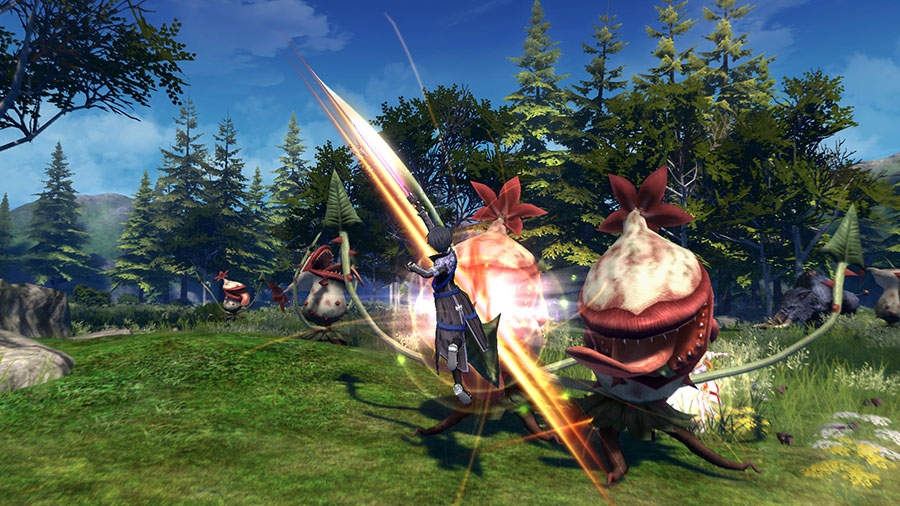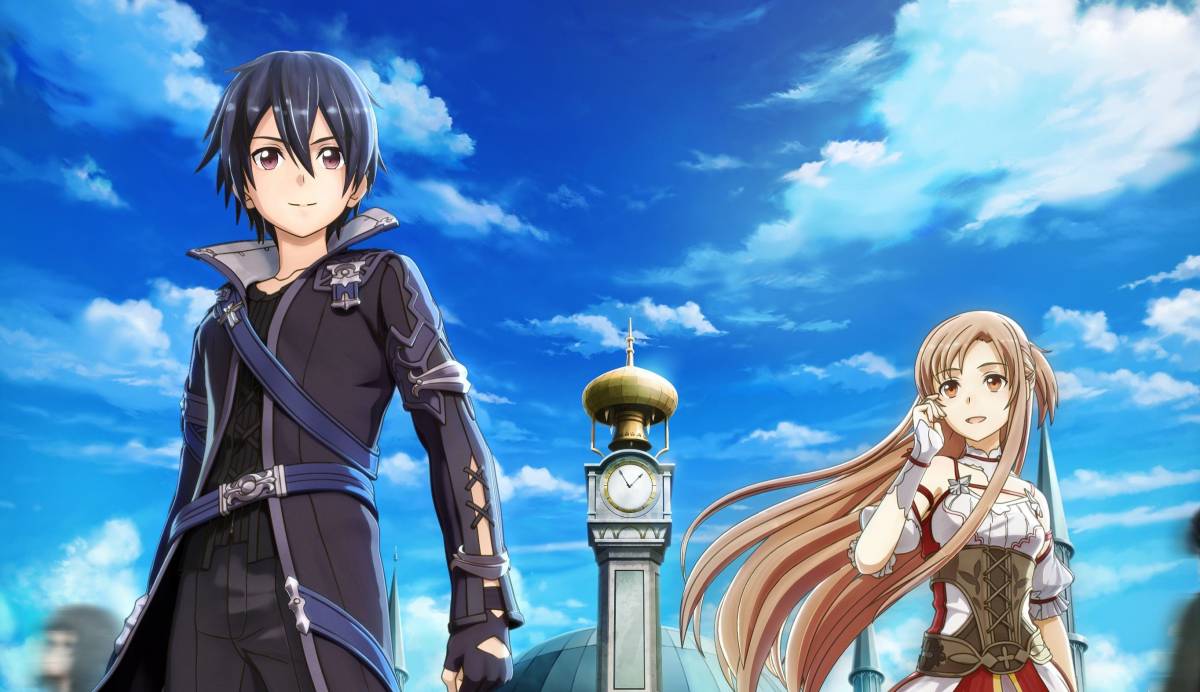Sword Art Online is a well beloved anime and manga series written by Reki Kawahara about a VRMMORPG that allows players to fully immerse themselves in the game world as if they were actually a part of it. And while this is certainly a fun idea and invariably exciting, players of the game soon found out they were unable to leave this world and that death in the game would equally result in death outside of the game.
Sword Art Online: Hollow Realization is a real game developed by Aquira and published by Bandai Namco for the PS4 and PS Vita, taking place after the events of the original Sword Art Online game series in a restored version of the original Aincrad called Ainground, with the in-game…game, itself being named Sword Art: Origin. It features the return of many known characters from previous stories in the series, and actually places you in control of Kirito at base level 1, allowing you to take full control and responsibility over developing Kirito throughout the journey, even going as far as to give you a full suite of character customization options, and the ability to rename the character entirely with female options.
And unlike Sword Art Online, Sword Art: Origin isn’t trapping players in the world with real consequences. Dying in a battle simply has you respawning at a certain location for you to try it again, which is certainly relieving from the character’s perspective, as they can finally enjoy the world created for them without the fear of death, but is a bit disappointing from a narrative and gameplay perspective. Of course, even if the real death of our characters was a threat, it’s still just a game to us, and even if they died from us playing we will just reload and try again, but it does sort of remove that sense of urgency and consequence. Now we’re just playing a game about other people just playing a game, and even with some of the narrative twists in Hollow Realization it still overall feels like the story isn’t as impactful and rewarding as it has previously.
That’s not to say the story is terrible, as there’s a lot of enjoyment among the characters with fully voiced dialogue and lengthy scenes of conversation, but much like a real MMO, nothing about the story really strings together coherently. You do various quests of different types, and sometimes a “main” quests will pop up allowing you to further the story. Character development relies on you knowing these characters previously, and while newcomers can get to know these people well enough, there’s little payoff in any sort of characters arcs. And honestly, if this was only a handheld title, this might have actually been passable. Personally, I played the game on PS Vita, and this method of bits of story mixed with random events played pretty well in small sessions, however I can’t imagine playing this long as a full console title for hours and hours. It’s not impossible, and I’m sure it’s still enjoyable, but there were times where I felt like I wasn’t making significant progress.
Speaking of the game being on PS Vita, it’s clear the game is struggling on the handheld. This is understandable though, as the main game is running on PS4, and Sword Art: Origin does consists of many large, open areas with dozens of NPCs roaming about, but the Vita makes some large concessions in order to make these areas a possibility. Render distance for character models and enemies in particular is the most notable, as some enemies won’t even appear until you’re almost on top of them, and specific NPC characters can be almost impossible to find quickly if you don’t already know where they usually reside. Even combining this with all the other noticeable downgrades, and the Vita still struggles to keep a stable framerate, and often suffers in control responsiveness as a result. Despite that however, combat just barely manages to stay playable in the worst of times.

Combat is deceptively simple at first, making use of a single button attack. Your earliest quests will just have you rushing up to some boars and mashing the attack button to do damage, occasionally pressing the dodge button as well in order to not get hit. Combat is certainly not always that simple, especially later on in the game. Aside from skill attacks, you have some control over your party’s actions in a separate quick menu, allowing you to direct them to dodge attacks, heal themselves, or to attempt to sync skill attacks. Often times during battle you’ll have your allies shout out certain actions you can perform, such as Switches, which can lead to some decent damage output. As for yourself, button mashing the attack button isn’t really the best option, as properly timing your last attack in a combo can increase the damage output, as well as parrying to stun targets.
What’s almost entirely too complicated at times is the character upgrade system. Opening up this window greets you with a large string of icons that do little to explain their effects and use. I could just be stupid, but I had a hard time figuring out how to effectively upgrade my character to perfect their potential output, and often just randomly put time into upgrades I wasn’t sure did anything. I’m sure with more dedicated time, I could have figured this out, but as far as I could tell it wasn’t as straightforward as it should have been. What’s also barely explained is the character personality system. Yeah, I’m still not sure what this does. You can encourage certain personality traits in your party members, but nothing immediately tangible seems to come from this. Again, with more dedicated time, I’m sure my easily distracted mind could figure this out, but it’s poorly explained from the start, and it would seem other players and reviewers also struggled to fully grasp the system.
You can form relationships with other “players” in the hub town, which in turn allows you to ask them to join your party to complete quests, and this is easy to achieve. As for main characters, there is this slight dating sim/fan service element that allows you to form relationships that will lead to a bit more intimate moments with the female characters, but hardly anything more than pillow talk. And all these issues gather together to form one large problem; Unless you’re dedicated to the franchise and its characters as a whole, you may find the game to be less rewarding to play than you’d anticipate. Nothing about the game is outright horrible or unmanageable, but it often feels like a mish-mash of unrealized potential and unfulfilled mechanics. In my opinion one of the saving graces that the game offers is a full co-op mode, allowing you to team up with a couple friends to play through the game’s quests together, but honestly you can say just about any game is better with co-op.
If you’re already fond of the series and the game in particular, you may enjoy your 50+ hours more than I did. However, it’s not the most approachable RPG on the market, and newcomers could find themselves a bit lost with understanding.
Some of the coverage you find on Cultured Vultures contains affiliate links, which provide us with small commissions based on purchases made from visiting our site. We cover gaming news, movie reviews, wrestling and much more.



